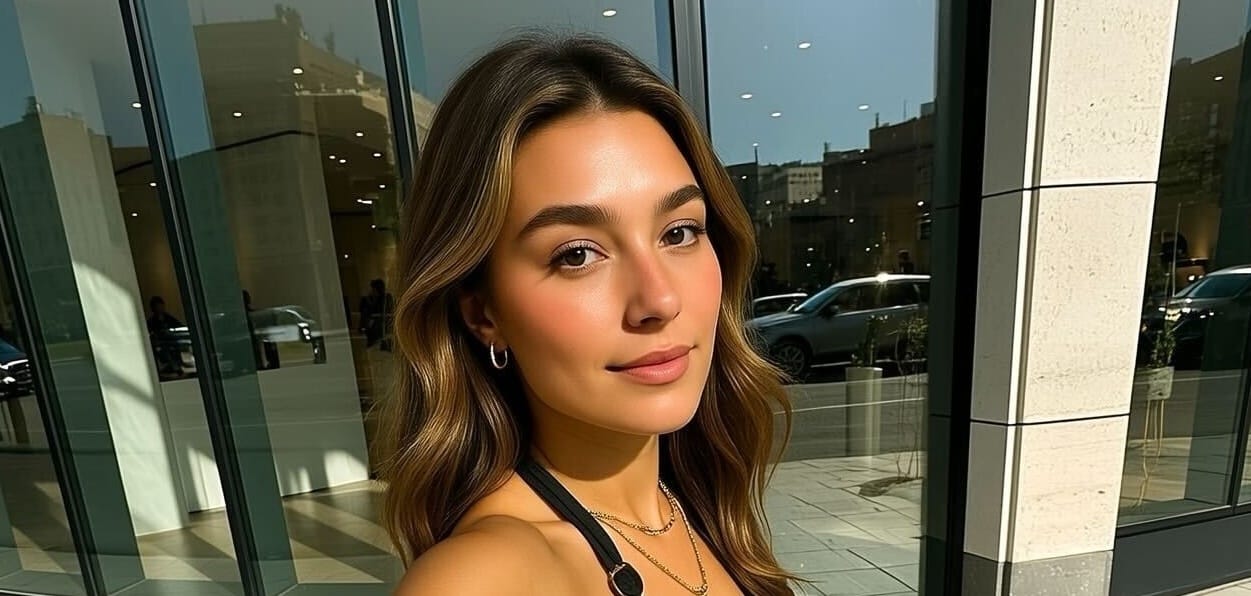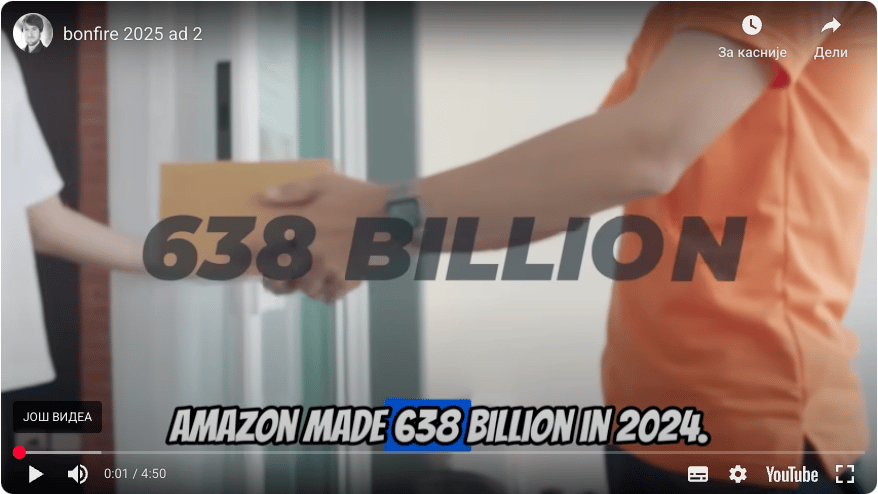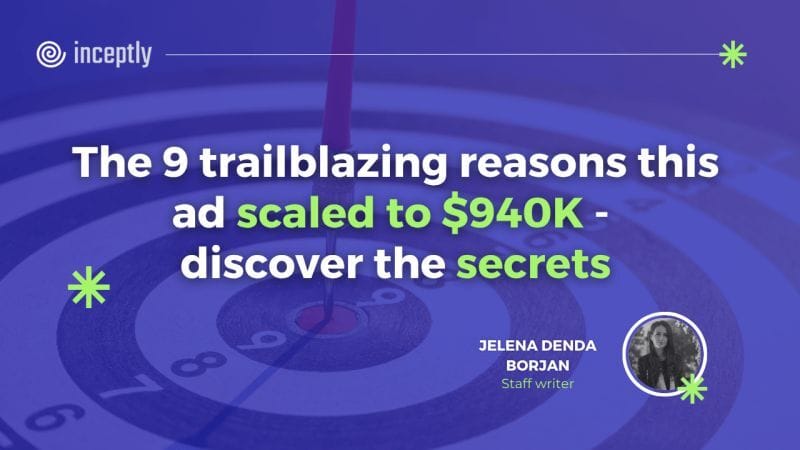- Inceptly
- Posts
- AI testimonials are cheap. But they’re quietly killing your ad performance. Here’s why 👀
AI testimonials are cheap. But they’re quietly killing your ad performance. Here’s why 👀
Yes, AI avatars are slick. Cheap. Always on time. |  Author: |
Want to brainstorm with us on new ways to scale your business with YouTube Ads (and other performance video platforms)?
Join us for a free YouTube ad brainstorming session here:
Why? Two words: Micro expressions
Our brains are wired to scan faces for truth. Tiny, involuntary muscle movements - so fast we don’t consciously notice them - are decoded by our emotional centers.
If the smile is just a hair off, the tone feels flat, or the eyes don’t align with the words.
We feel it.
Even if we can’t name what we feel, we trust it.
And in direct-response marketing, subconscious trust is gold. That’s why authenticity still wins - even in an AI era.
Real cases, real lessons
1. Tilly Norwood: The AI “actress” who “crossed the line”
In 2025, a fully AI-generated persona named Tilly Norwood was launched as an “actor.”
She starred in a short film and gained a following - but viewers quickly noticed something was off. Her mouth didn’t always sync, her expressions felt stiff, and her “perfect” skin looked uncanny.
The project sparked a debate: Can audiences truly connect with a synthetic face?
The verdict was clear - technical impressiveness can’t compensate for emotional distance. The actors’ union Sag-Aftra condemned the development and said Norwood’s creators were “using stolen performances”.
Lesson: Perfection kills relatability. Real faces, with all their quirks, signal truth.
2. Iris Lane: When fans revolted against a digital influencer
Iris Lane was an AI influencer created by Slate Brands to promote fragrances. Her videos were glossy and consistent - but too consistent. TikTok users picked up on the subtle tells: off-sync lips, recycled gestures, eyes that never quite engaged.
Fans felt deceived. Within months, Slate quietly retired Iris Lane, citing “audience misalignment” and “authenticity concerns.”
Lesson: In an age of deepfakes, even small breaks in emotional realism can destroy brand trust.
3. Industry pullback: AI influencers lose momentum
According to Business Insider, brand partnerships with AI influencers dropped by nearly 30% in the first eight months of 2025 compared to 2024.
Why? Consumers are skeptical. They want connection, not simulation. Many marketers found that the cost savings of AI faces weren’t worth the engagement drop - and the reputational risk.
Lesson: Authenticity converts; synthetic charisma doesn’t.
Real video ad & testimonial examples you can watch now
Don’t just take my word for it - see for yourself. These real ads showcase the power of human emotion, micro expressions, and authenticity in action:
Bonfire ad, starting at 3:30: watch how micro expressions carry the credibility. It’s a perfect example of how social proof outperforms polish:
Rakesh Rana, starting at 0:00: shows customers sharing their experience in first person - relaxed tone, imperfect delivery, genuine emotion:
What to watch for:
Natural smiles, slight hesitation, shifting gaze
Real backgrounds and ambient noise
Short, unpolished cuts, candid transitions
Emotional narratives (fear, relief, surprise) — not feature dumps
Let your readers click through and see the difference that human presence brings.
The science behind it
Micro expressions:
Dr. Paul Ekman’s decades of research show that humans detect sincerity through rapid facial movements lasting just fractions of a second. AI can mimic smiles, but not the emotion behind them.
Mirror neurons:
When we see genuine emotion, our brains mirror it. We don’t just understand - it makes us feel. That biological empathy is the foundation of trust and persuasion.
Trust and disconfirmation:
Studies show we’re more likely to believe testimonials that “feel real” - especially when the storyteller resembles us or shares our challenges.
Why real human testimonials still win
89% of marketers say customer testimonials and case studies are among the most effective content types.
Video testimonials evoke tone, micro expression, and context - subtleties that AI still struggles to synthesize convincingly.
AI influencers are increasingly viewed as “emotionally flat” and “potentially brand-damaging.”
How to apply this right now
Pick one of those example videos above. Watch it and take notes: what micro movement or detail sells the moment?
Then, in your next ad test, record a real customer answering one emotionally loaded question - e.g., “How did you feel the day after using our product?”
Use that raw footage in your campaign. Compare it head-to-head against your AI or polished spot, and observe engagement, retention, and conversion uplift.
This simple test often reveals how much authenticity matters.
How to capture real trust
🎤 Find a great interviewer.
Someone who can draw out emotion without a script.💬 Invite real, happy customers.
No actors, no scripts — just honest stories.🎁 Offer a simple thank-you.
Discounts, early access, or a small reward.📹 Record a casual call.
Zoom, Google Meet — authentic lighting and background are fine.✂️ Edit with care.
Cut filler, not feeling. Keep the laughter, pauses, and stumbles.📝 Sign a release form.
Keep it ethical and transparent.
Boom. You’ve got a testimonial that doesn’t just look real — it feels real.
And that’s what sells.
The bigger picture
AI will keep getting better - writing scripts, syncing lips, generating believable voices.
But what it can’t fake is vulnerability.
A shaky laugh. A tear at the corner of the eye. The warmth that leaks through a real smile.
The stories of Tilly Norwood, Iris Lane, and dozens of other AI faces remind us: the moment we sense something isn’t human, we stop believing.
So yes - use AI for efficiency. Let it help with editing, captions, and even scripting.
But when it’s time to connect? Put a real person in front of the camera.
Because in a world full of deepfakes, truth is your best conversion tool.
🎯 Inceptly’s top picks:
Essential reading you can't afford to skip
$800,000 in ad spend on a single video - for a pillow. Sounds insane, until you see the structure. This breakdown uncovers how one simple ad followed two timeless rules: clarity of lead and singularity of message, to dominate YouTube and scale far beyond what most brands could ever imagine.
Inside, you’ll see how a clean, creative setup, one strong emotional thread, and flawless sequencing of benefits turned a simple comfort product into a success story. It’s a must-read for anyone running performance-driven video ads.
They cracked the code on scale - and you won’t believe how.
In this breakdown, we pull back the curtain on the 9 trailblazing reasons why one ad didn’t just perform - it exploded. From clever angles and tight hooks to layered offers and psychological taps, every piece was calculated for scale.
If you’re chasing growth, this is the blueprint you need.
Let’s break down your funnel and see where scale is hiding!
Most brands wait too long to find out why YouTube isn’t working. We’ll show you what to test — and what to kill:
 | Anastasia Tereshchenko, Video Editor Anastasia is a standout member of our creative team, renowned for her expertise in video editing and production. With an unmatched eye for detail and a wellspring of inspiration, she has profoundly influenced the visual identity of Inceptly and VidTao, making her an invaluable asset to our projects. |
Get in touch with us by responding to this email or tagging us on LinkedIn or Instagram and sharing your thoughts. Your feedback helps us keep our newsletter relevant and interesting.






